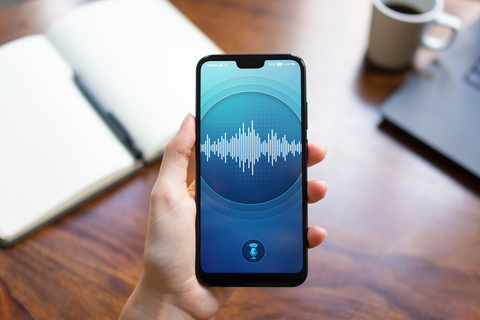
By Kate Tunison
Have you listened to more podcasts, webinars and Zoom meetings than ever during the last year? If you are like me the answer is “yes.” Social distancing has made these sources of doing business and connecting with others imperative and understandable.
As I tune in, one of the first things I notice is the sound of the speaker’s voice – can it keep my attention, or do I find it grating and irritating? If the voice quality is not agreeable, I easily become distracted and quickly check out.
With audio-centric resources taking the place of in-person meetings, the quality of the speaker’s voice has become more important than ever. Don’t give your audience reasons to tune you out!
Vocal Coaching
Ask yourself, “How do I sound to others?” Do I need to be persuasive? Do I need to inspire? Do I need to project confidence? Can they listen to me and enjoy it? Whatever your business goals are, its worth spending time on how you come across to others. Your voice can be one of your most attractive qualities in communicating and engaging with others.
Here are a few tips to assist you in being more influential and persuasive using your voice:
- Eliminate Vocal Fry tone (a creaky vibration creating friction with your vocal cords). This is learned behavior and can be corrected. To hear an example of Vocal Fry Tone, look at the YouTube video called “Kardashian Vocal Fry Fad’s Effect on the Voice.” Its only three minutes long, however you will get the hang of what vocal fry is after listening for less than one minute, promise. Record yourself and listen for it in your own voice. If you have unconsciously, or purposely, learned this vocal behavior find some assistance and work on unlearning it. Its irritating, hard to listen to for any length of time and could be damaging to your vocal cords.
- Breath is important. Breathe deeply from your diaphragm so there is enough air to project your voice out. I’m not suggesting you are trying to shout or be louder – breathing from your diaphragm along with keeping your throat open gives your voice power while remaining pleasant. If possible, standing up vs. sitting down when delivering helps you to breathe deeper.
- Be aware of Upward Glide, Up Speak, Valley Speak, High Rising Terminal. These are all labels for ending sentences with an upward lilt and a higher pitch, so what you said sounds like a question versus a declarative statement. It comes across as less confident and undermines your credibility. Listen to yourself and determine if this is a pattern you incorporate. If so, try to use declarative statements as opposed to twisting it into an awkward statement with a high rising question mark at the end. If you find yourself being taken less seriously than you desire, make sure you are not using up speak.
- Pace yourself. Speaking too fast robs your voice of quality and resonance and, you cannot be breathing from your diaphragm when you are talking quickly. Listening to someone speak too fast is like reading the fine print of an article – after the first couple of lines you give up and don’t read anymore because it’s boring. Your listeners will give up and quit listening because it becomes too hard to keep up.
- Pausing appropriately allows your audience to process what you have said. Pausing is like using punctuation because it makes your communication easier to understand. Take a breath.
- Pitch refers to your voice inflections and intonations. Pitch lends color, richness and interest to your voice. Variations in pitch ensure you are not delivering in a monotone. If your pitch is too high, it will get turned off quickly. Modulate your voice varying the tone, speak louder or softer for emphasis. Add some animation to your delivery!
Conclusion
Engage a friend, colleague or coach to practice with you with an ear toward listening to your voice quality. MS Teams, Zoom and webinar meetings are not going away. Gaining confidence and getting more comfortable with presenting yourself in audio mode will ensure no one will be changing the channel or checking out when you are the speaker.
Kate Tunison is president and founder of PresentingPlus!. Email Kate at Kate@presentingplus.com.








